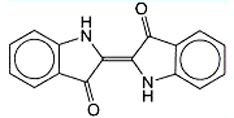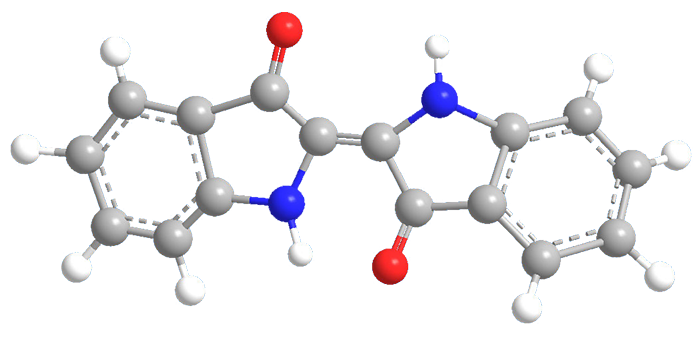

Indigo, sometimes called indigo dye, is probably the oldest dye or pigment used by humans. It was originally obtained from plants in the Indigofera and Isatisgenera. In 1878, A. von Baeyer synthesized it from isatin; 12 years later, K. Heumann developed a commercial process; and by the end of the 19th century, most indigo dye was synthetic. Indigo is insoluble in water, so dyers treat yarn with alkaline solutions of the yellow reduced form leucoindigo, which oxidizes to indigo when the yarn is exposed to air.
MOTW update:
January 22, 2018
Indigo is the oldest dye or pigment used by humans; and the manufactured product is still in use today. Recently, John E. Dauber at the University of California, Berkely, developed a biochemical process to make indigo that is not only environmentally “green”, but it also allows cotton fabric to be treated with an indigo precursor, which then oxidizes in place to dye the fabric.

Learn more about this molecule from CAS, the most authoritative and comprehensive source for chemical information.
Molecule of the Week needs your suggestions!
If your favorite molecule is not in our archive, please send us a message. The molecule can be notable for its current or historical importance or for any quirky reason. Thank you!
Stay Ahead of the Chemistry Curve
Learn how ACS can help you stay ahead in the world of chemistry.

